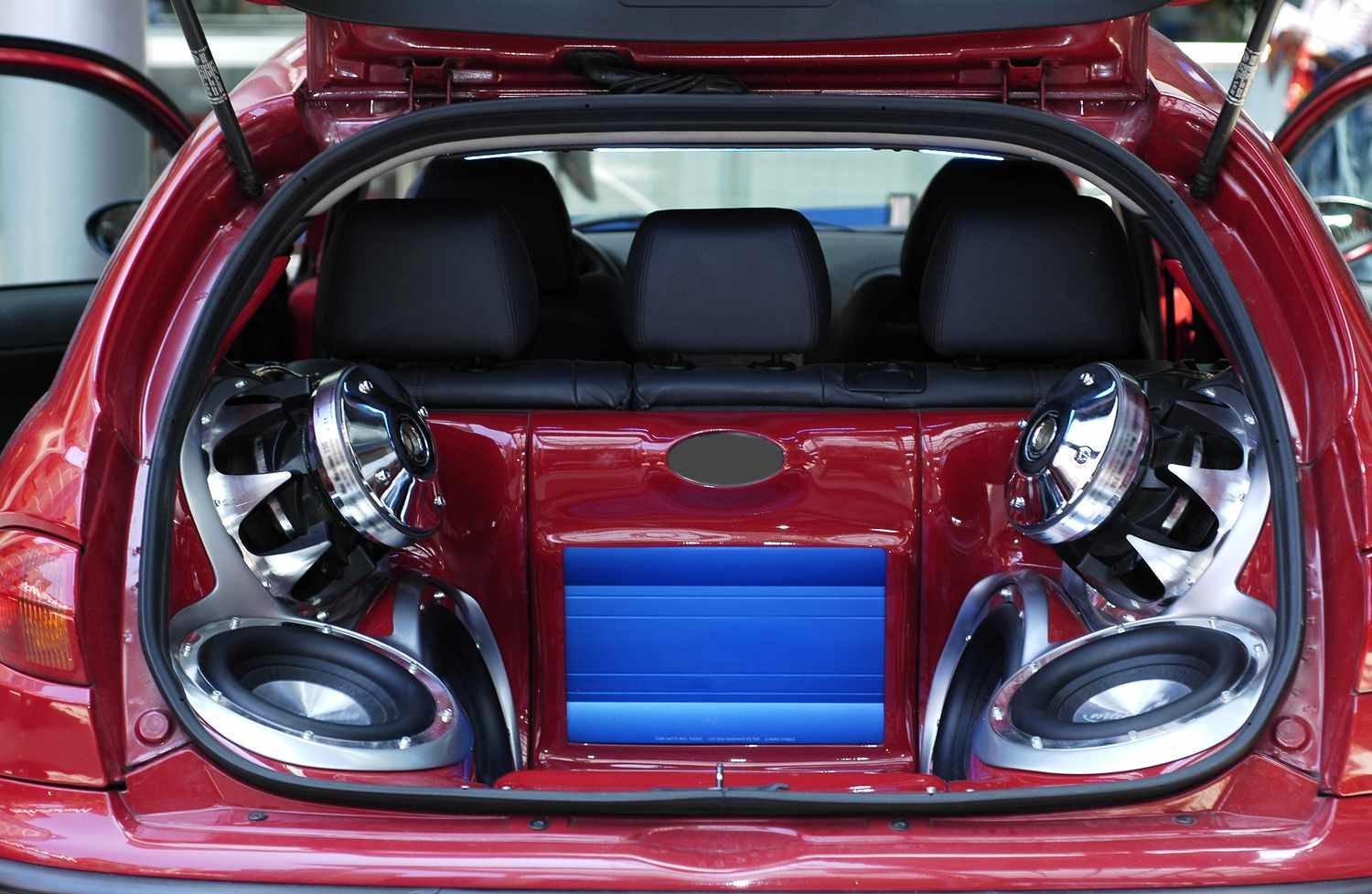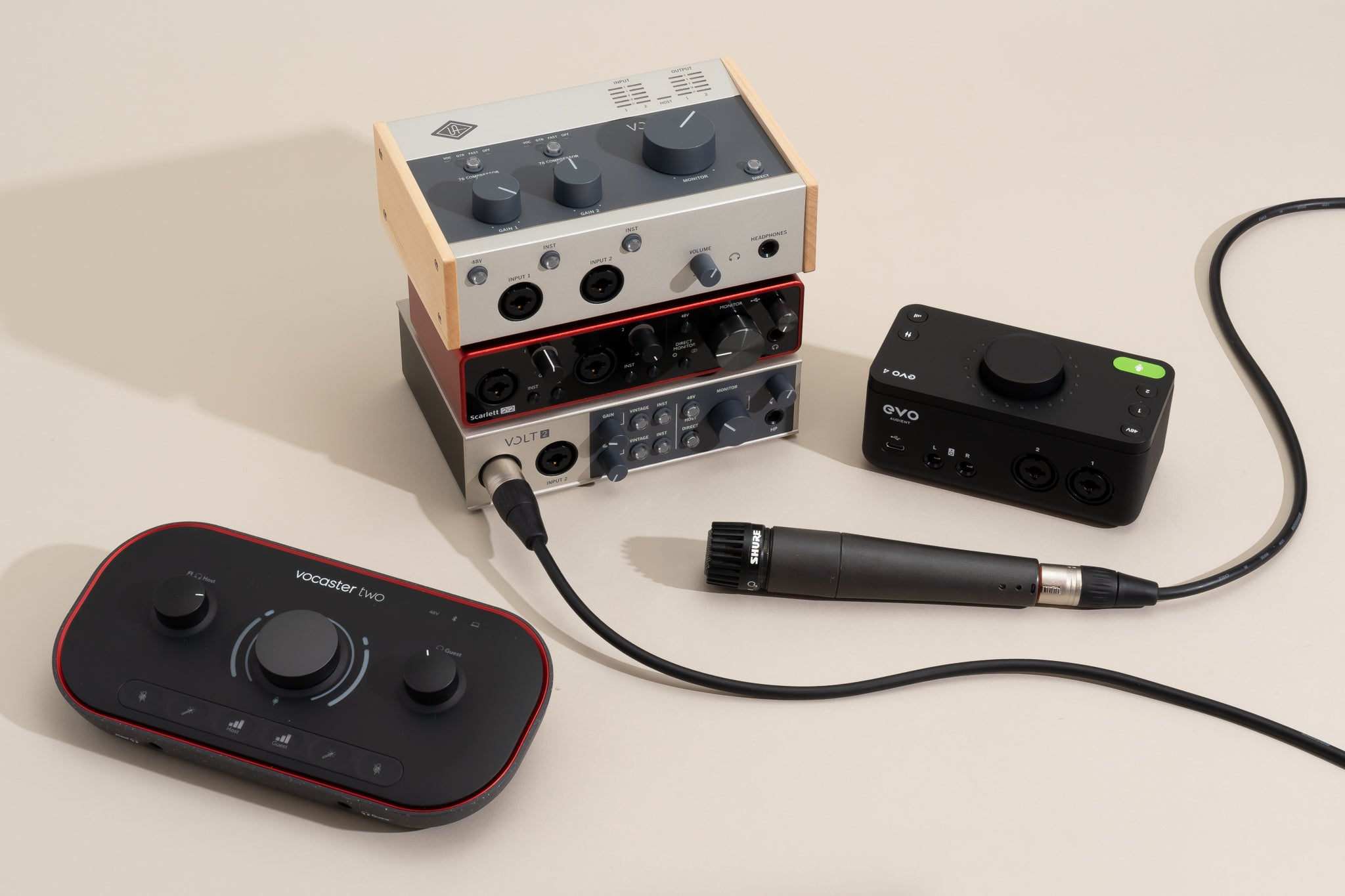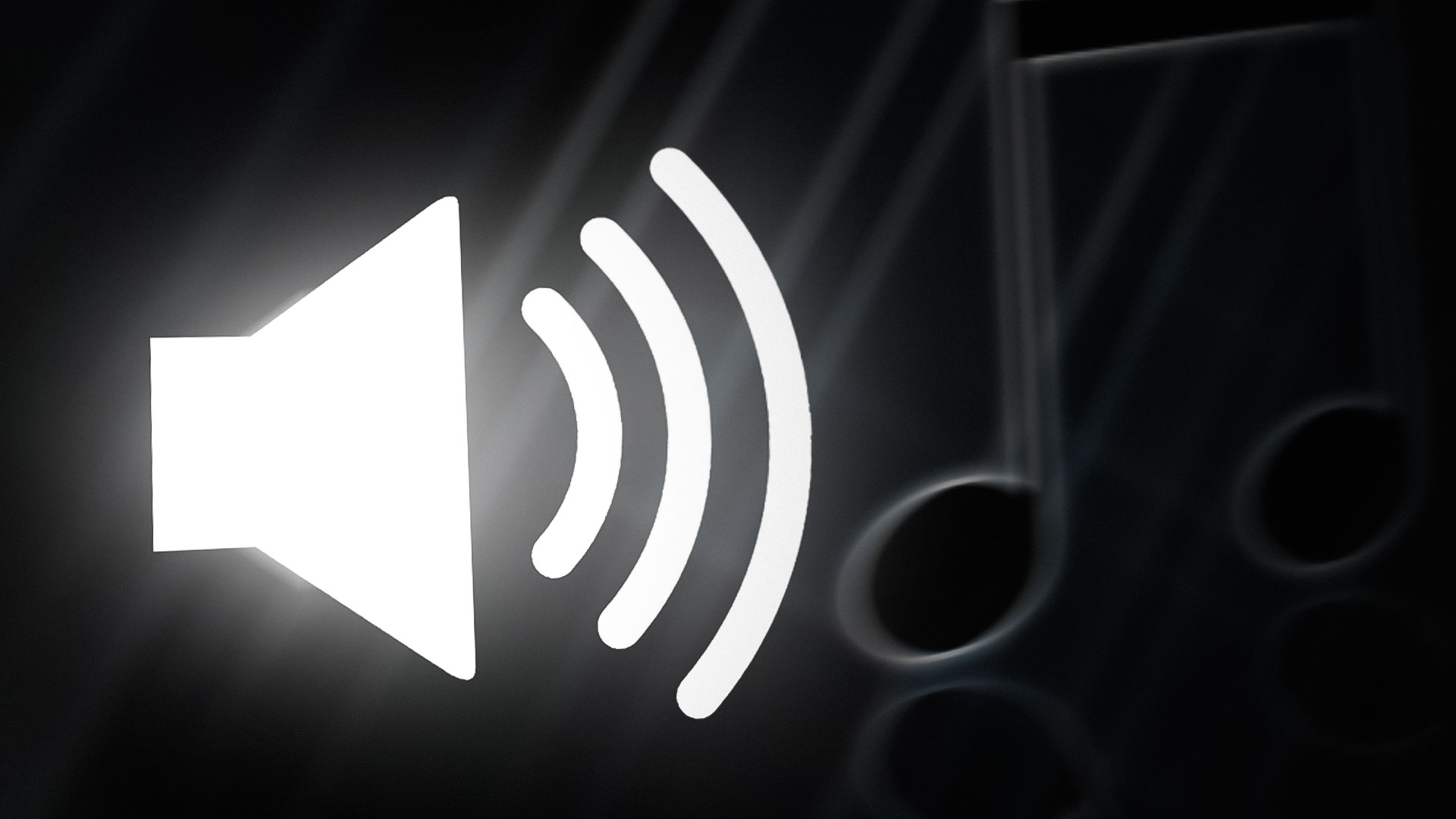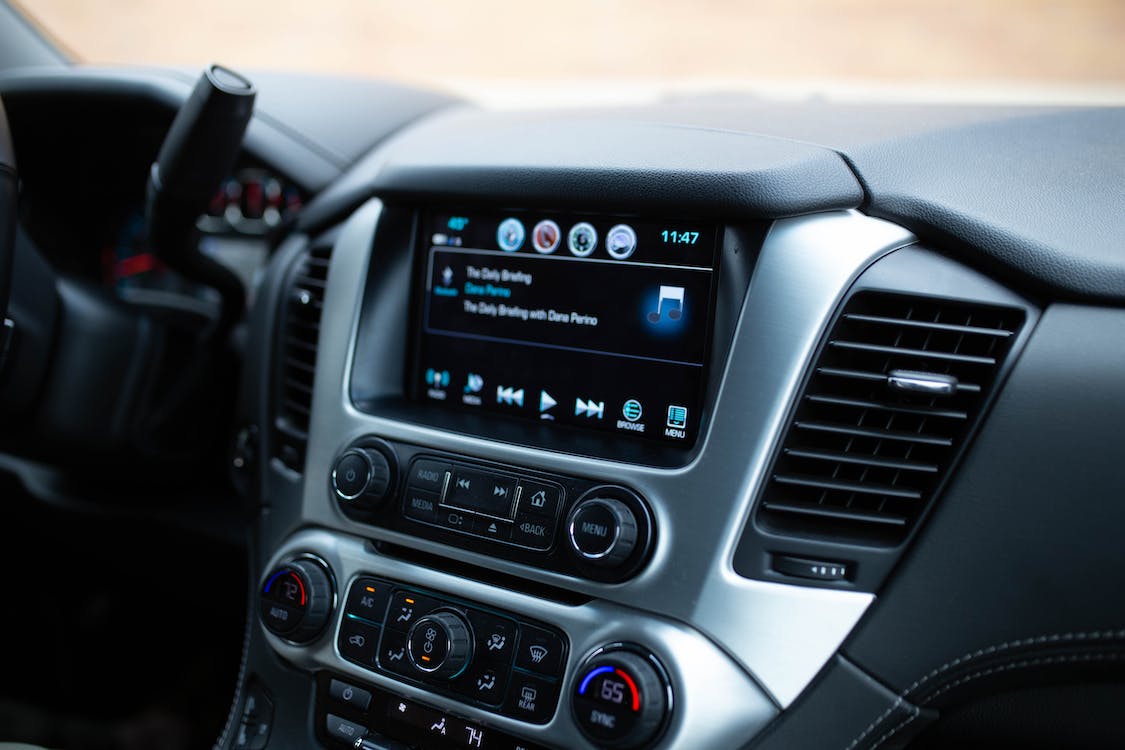Home>Production & Technology>Stereo>How To Make Your Car Stereo Louder


Stereo
How To Make Your Car Stereo Louder
Modified: January 22, 2024
Learn how to make your car stereo louder with these simple tips and tricks. Enhance your listening experience and enjoy crystal-clear sound with our expert advice.
(Many of the links in this article redirect to a specific reviewed product. Your purchase of these products through affiliate links helps to generate commission for AudioLover.com, at no extra cost. Learn more)
Table of Contents
Introduction
When it comes to enjoying your favorite music while on the road, having a high-quality car stereo system can make all the difference. A powerful and crystal-clear sound can transform your driving experience, immersing you in the music and enhancing your overall enjoyment.
Whether you’re a music enthusiast or simply someone who loves to have a good sound system in their vehicle, knowing how to make your car stereo louder is essential. In this article, we will explore various methods and techniques that can help you achieve a louder and more impressive sound in your car.
Before diving into the technical aspects of upgrading your car stereo system, it’s important to understand the basic components and how they work together. Your car stereo system typically consists of a head unit or receiver, speakers, amplifiers, and various audio settings.
The head unit is the control center of your car stereo system. It usually includes a radio, CD player, and auxiliary inputs for connecting external devices. The speakers are responsible for producing the sound and can be located in different areas of the car, including the doors, dashboard, and rear deck. Amplifiers are used to increase the power and clarity of the audio signal, while audio settings such as EQ (Equalizer) and balance allow you to adjust the sound according to your preferences.
Now that we have a basic understanding of the components involved, let’s explore different approaches to making your car stereo louder. Whether you’re starting with a stock system or have already made some modifications, these tips and techniques will help you to maximize the sound output and achieve the level of volume you desire.
Understanding Car Stereo Systems
Before delving into the specifics of making your car stereo louder, it’s important to have a clear understanding of how car stereo systems work. This knowledge will help you make informed decisions when it comes to upgrading and optimizing your setup.
A typical car stereo system consists of several components that work together to produce high-quality audio. The main components include the head unit, speakers, amplifiers, and various audio settings.
The head unit, also known as the receiver or stereo, is the control center of the entire system. It provides access to different audio sources such as radio, CD player, and external devices like smartphones and MP3 players. The head unit also contains preamp outputs that connect to the amplifier for boosting the audio signal.
Speakers play a crucial role in reproducing sound in your car. They come in different sizes and configurations, such as coaxial, component, and subwoofers. Coaxial speakers are the most common type found in factory car stereo systems. They consist of a woofer for midrange frequencies and a tweeter for high frequencies. Component speakers offer better sound quality and consist of separate woofers, tweeters, and external crossovers. Subwoofers are dedicated speakers designed to reproduce low-frequency bass sounds.
Amplifiers are responsible for powering the speakers and enhancing sound quality. They take the weak audio signal from the head unit and amplify it to a level that can drive the speakers effectively. Amplifiers come in various power ratings and configurations, such as mono (for subwoofers), 2-channel, 4-channel, and multi-channel amps.
To fine-tune the sound output, car stereo systems feature audio settings such as the equalizer (EQ), balance, and fader controls. The equalizer allows you to adjust the frequency response of the audio signal, making it sound more balanced. The balance control lets you adjust the sound distribution between the left and right speakers, while the fader control adjusts the sound distribution between the front and rear speakers.
By understanding the different components of a car stereo system and their functions, you can better assess the current setup of your vehicle and determine areas where improvements can be made. Upgrading specific components or adjusting the audio settings can significantly enhance the overall sound quality and loudness of your car stereo system.
Assessing Your Current Setup
Before diving into any upgrades or modifications, it’s important to assess your current car stereo setup. This step will help you identify any shortcomings or areas for improvement, allowing you to make informed decisions about which components or settings to focus on.
Start by evaluating the sound quality and loudness of your current system. Take note of any issues you notice, such as distortion, lack of clarity, or insufficient volume. Consider whether the sound is evenly distributed across all speakers or if there are areas where it is weaker.
Next, take a closer look at the components of your car stereo system. Examine the quality and condition of the speakers, verifying if they are functioning properly and free from any damage. Check if the head unit has any advanced audio settings, such as built-in equalizers or amplifier controls.
Consider the power output of your current amplifier, if applicable. Determine if it is sufficient to drive your speakers and provide the desired level of volume. If you don’t have an amplifier, take note of the power limitations of your head unit and speakers.
Another factor to consider is the wiring and connections in your car stereo system. Ensure that all cables are properly connected and securely fastened. Loose or faulty connections can hinder the performance of your system and result in reduced sound quality.
Lastly, think about the acoustics of your vehicle. Factors such as the size and shape of the car’s interior, the type of materials used, and the presence of sound-absorbing or reflecting surfaces can all impact the sound quality. Keep this in mind, as sound deadening materials or positioning speakers in optimal locations can greatly enhance the performance of your car stereo system.
By thoroughly assessing your current setup, you can identify areas where improvements can be made. Whether it’s upgrading speakers, adding an amplifier, fine-tuning the EQ settings, or addressing any wiring issues, this evaluation will serve as a foundation for optimizing your car stereo system to achieve a louder and more impressive sound.
Upgrading Your Speakers
One of the most effective ways to make your car stereo louder is by upgrading your speakers. Factory speakers often have limited power handling and may not deliver the desired audio quality and volume. By investing in higher-quality aftermarket speakers, you can significantly enhance the sound output of your car audio system.
When choosing new speakers, consider factors such as power handling, frequency response, and sensitivity. Power handling refers to the amount of power a speaker can handle without distortion. Look for speakers with a higher power handling rating to ensure they can handle the increased output from an amplifier, if you plan to install one.
Frequency response indicates the range of frequencies that a speaker can reproduce. Opt for speakers that have a wide frequency response to ensure that both low and high frequencies are accurately reproduced. This will result in a fuller and more immersive sound experience.
Sensitivity, often measured in decibels (dB), indicates how loud a speaker can get with a given amount of power. Higher sensitivity speakers require less power to produce the same volume as speakers with lower sensitivity. This means that speakers with higher sensitivity are generally more efficient and can produce louder sound levels.
Consider the size and configuration of the speakers as well. Ensure that the new speakers are compatible with the mounting locations in your vehicle. You may need to purchase adapter brackets or make modifications to properly install the new speakers. Additionally, consider whether you want to upgrade all of your speakers or focus on specific areas, such as front or rear speakers.
When installing the new speakers, it’s important to properly align and secure them for optimal sound reproduction. Follow the manufacturer’s instructions and use appropriate mounting techniques to ensure the speakers are positioned correctly and free from vibrations or rattling.
Upgrading your speakers can yield a significant improvement in sound quality and loudness. The increased power handling, wider frequency response, and higher sensitivity of aftermarket speakers will bring your favorite music to life, delivering cleaner sound and higher volume levels. Combine this upgrade with other modifications, such as installing an amplifier or adjusting the EQ settings, for an even more impressive audio experience in your car.
Installing a Car Amplifier
If you want to take your car stereo system to the next level in terms of volume and power, installing a car amplifier is a great option. An amplifier will provide additional power to your speakers, resulting in a louder and more dynamic sound.
Before installing an amplifier, make sure you have a compatible head unit or receiver that has preamp outputs. These outputs provide the audio signal that will be amplified by the car amplifier. If your head unit doesn’t have preamp outputs, you can use a line output converter to convert the speaker-level outputs into preamp-level signals.
Start by choosing the right amplifier for your system. Consider the power output and the number of channels you need. The power rating should match or exceed the power handling of your speakers to ensure optimal performance. A mono amplifier is ideal if you only want to power a subwoofer, while a multi-channel amplifier can power multiple speakers.
Once you have your amplifier, the next step is to find a suitable location for installation. This can vary depending on your vehicle’s layout and available space. Common locations include the trunk, under a seat, or in the glove box. Make sure the location allows for proper ventilation to prevent overheating.
Properly wire the amplifier by connecting the power and ground cables. Use the appropriate gauge wire to ensure the amplifier receives sufficient power from the car’s battery. Route the wires away from any moving parts or hot areas to prevent damage.
Next, connect the RCA cables from the head unit’s preamp outputs to the amplifier’s input. This will transmit the audio signal to the amplifier for amplification. Connect the speaker wires from the amplifier’s output to the respective speakers, ensuring proper polarity.
Before finalizing the installation, test the system to ensure everything is functioning correctly. Adjust the gain settings on the amplifier to match the output voltage of your head unit and prevent distortion.
Installing a car amplifier can significantly increase the power and volume of your car stereo system. By providing more power to your speakers, the amplifier allows for clearer and louder sound reproduction. Combined with high-quality speakers, this upgrade will take your audio experience to new heights.
Adjusting the EQ Settings
One of the often overlooked aspects of maximizing the loudness and sound quality of your car stereo system is fine-tuning the EQ (Equalizer) settings. The equalizer allows you to adjust the frequency response of the audio signal, helping you achieve a more balanced and powerful sound.
Most car stereo systems come with a built-in equalizer that offers various preset EQ settings, such as rock, pop, jazz, and more. While these presets can be a good starting point, manually adjusting the EQ settings based on your personal preferences and the acoustic characteristics of your vehicle can yield even better results.
Start by finding the EQ settings on your head unit or receiver. This is usually located in the audio or sound settings menu. Once you’ve accessed the EQ settings, you’ll typically see a graphical representation of the frequency spectrum with adjustable sliders.
Begin by adjusting the bass frequencies. Increasing the bass levels can add depth and impact to your music. However, be cautious not to overdo it, as excessive bass can muddy the sound. Experiment with different levels to find the right balance for your preferences and the type of music you listen to.
Next, move on to the midrange frequencies. This range affects the clarity and presence of vocals and instruments. Adjust the sliders to enhance the details and make the vocals sound clearer and more distinct. Avoid boosting the midrange frequencies too much, as it can cause harshness or distortion.
Lastly, focus on the treble frequencies. Increasing the treble can add brilliance and sparkle to the sound, making it more vibrant. However, similar to the bass, be careful not to exaggerate the treble, as it can become shrill and fatiguing to the ears. Fine-tune the sliders to find a balance that adds brightness without compromising the overall sound quality.
Remember, the EQ settings should be adjusted based on your personal preferences and the characteristics of your car’s acoustics. Take the time to listen to various genres of music and make subtle adjustments to achieve the desired sound.
It’s worth noting that some advanced car stereo systems offer parametric equalizers, which provide even more precise control over specific frequency bands. If available, take advantage of these features to further optimize the EQ settings and tailor the sound to your liking.
By adjusting the EQ settings and finding the right balance between bass, midrange, and treble frequencies, you can enhance the loudness, clarity, and overall impact of your car stereo system. Experiment with different settings and fine-tune them to transform your driving experience into a concert-like atmosphere.
Sound Deadening Materials
Another effective way to make your car stereo system louder and improve its overall sound quality is by using sound deadening materials. These materials help reduce unwanted vibrations, road noise, and resonance in your vehicle, allowing the music to be more prominent and clear.
There are several types of sound deadening materials available on the market, each with its own advantages and applications. One commonly used material is butyl rubber sheets. These sheets are thick and flexible, providing excellent vibration damping properties. They can be applied to doors, trunk lids, and other areas where vibrations are prominent.
Another popular option is closed-cell foam. This lightweight material is effective in reducing road noise and echoes. It can be installed on the interior panels of your car, such as the roof, floor, and firewall.
Sound deadening mats, often made of materials like asphalt, butyl, or mass-loaded vinyl, are another choice for reducing noise. These mats can be applied to the metal surfaces of your car, such as the doors and floor, to absorb and block sound waves.
To install sound deadening materials, start by cleaning the surfaces thoroughly to ensure proper adhesion. Cut the materials to size and apply them using a roller or a hand pressure tool. Make sure to cover as much surface area as possible to maximize the effectiveness of the sound deadening materials.
In addition to reducing noise, sound deadening materials can also help improve the bass response of your car stereo system. By eliminating unwanted vibrations and resonance, you can achieve cleaner and tighter bass reproduction.
It’s important to note that while sound deadening materials can enhance the sound quality and loudness, they won’t magically transform a poorly designed or low-quality system into a high-end audio setup. However, when combined with other upgrades and optimizations, sound deadening materials can make a noticeable difference in the overall sound experience in your vehicle.
If you’re serious about getting the best sound possible from your car stereo system, consider investing in quality sound deadening materials. Whether you’re aiming for a more immersive listening experience or simply want to reduce external noise, these materials can help you achieve your desired results.
Exploring Alternative Options
While upgrading speakers, installing an amplifier, adjusting EQ settings, and using sound deadening materials are effective ways to make your car stereo louder, there are also alternative options worth considering. These alternative options can further enhance your audio experience and provide unique benefits.
One alternative option is to install a powered subwoofer. A powered subwoofer is a compact unit that combines a subwoofer speaker with an amplifier in one enclosure. It’s designed to reproduce low-frequency bass sounds with more power and accuracy than the built-in speakers. Adding a powered subwoofer to your car stereo system can significantly improve the low-end response and overall impact of the music.
Another option is to upgrade your head unit to a model with advanced audio features. Some head units offer built-in digital signal processing (DSP), which allows you to fine-tune the audio settings and customize the sound to your liking. DSP can provide more precise control over the sound image, equalization, and time alignment, resulting in a more immersive and high-fidelity audio experience.
If you’re looking for a wireless option, consider using a Bluetooth audio receiver. These devices can connect wirelessly to your car stereo system, allowing you to play music from your smartphone or other Bluetooth-enabled devices. Bluetooth audio receivers often offer better sound quality compared to traditional FM transmitters or aux cables, providing a convenient and seamless way to enjoy your favorite music in the car.
Additionally, there are external processors available that can enhance the audio signal before it reaches your amplifier and speakers. These processors, such as digital sound processors (DSPs) or equalizers, offer advanced audio controls and signal processing capabilities. They can help overcome any acoustic limitations of your vehicle and fine-tune the sound to achieve optimal loudness and clarity.
Lastly, consider the layout and positioning of your speakers. Experiment with different speaker placements to achieve the best soundstage and imaging. Moving speakers away from reflective surfaces, such as windows or hard plastic panels, can help reduce unwanted echoes and enhance the overall sound quality.
Exploring these alternative options allows you to customize and optimize your car stereo system according to your specific needs and preferences. Whether you choose to add a powered subwoofer, upgrade your head unit, or fine-tune the speaker placements, these alternative options can provide a unique audio enhancement and take your car stereo experience to new heights.
Conclusion
Achieving a louder and more impressive car stereo system is within your reach. By implementing the strategies and techniques discussed in this article, you can transform your driving experience into a concert-like atmosphere filled with powerful and crystal-clear sound.
Start by assessing your current setup and identifying areas for improvement. Consider upgrading your speakers to ones that can handle more power and reproduce a wider frequency range. Installing a car amplifier can provide the extra power needed to drive your speakers and increase the overall volume. Fine-tuning the EQ settings will allow you to adjust the sound to your preferences and optimize the performance of your system.
Don’t overlook the importance of using sound deadening materials to reduce vibrations, resonance, and road noise. These materials can greatly enhance the sound quality and improve the bass response of your car stereo system.
Additionally, explore alternative options such as powered subwoofers, advanced head units with DSP capabilities, Bluetooth audio receivers, and external processors. These options can provide additional enhancements and fine-tuning possibilities for your audio experience.
Remember, the key to achieving a louder car stereo system is striking a balance between power, quality, and optimization. Pay attention to the individual components of your system and how they work together to create an immersive and enjoyable sound. Experiment with different setups and settings to find the perfect combination that suits your preferences.
By following the tips and techniques outlined in this article, you can elevate your car stereo system to new levels of performance. Enjoy the journey as you immerse yourself in your favorite music with a powerful, dynamic, and satisfying sound that will make every drive an unforgettable experience.











